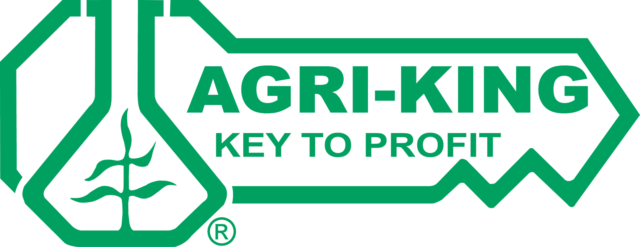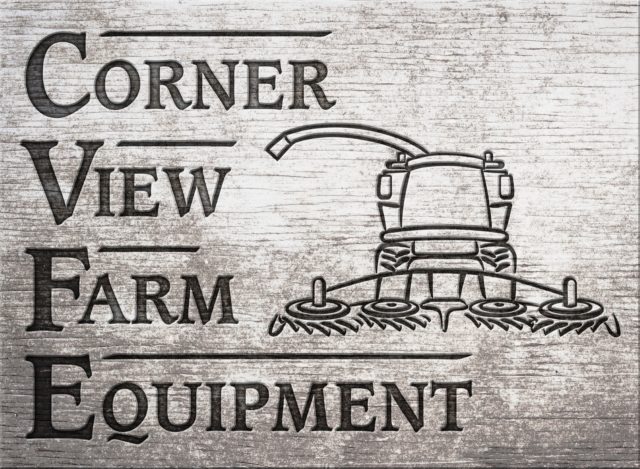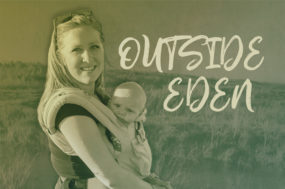These types of silos might also be referred to as trenches, pits, piles or stacks. Most horizontal silos that are built above ground level with construction-grade material for sides are called bunker silos.
Horizontal silos that are cut into the earth with only the earth serving as sides are normally called trench silos. If forage is dumped on the ground or other hard surface into piles with no structural walls defining the silage mass, it is usually referenced as a drive-over pile silo.
The size of bunkers, trenches and piles can vary according to the size of the farm operation, and they all have some hazards in common.
Even so, the most serious hazards seem associated with bunker silos because of the raised sidewalls. For example, injury reports involving bunker silos include worker entanglement with a silage defacer and a worker buried by collapsed silage at the face of a bunker silo.
This [article] addresses safety hazards and precautions for horizontal silos, particularly bunker silos.
Harvest pre-inspection
Bunker silos should be inspected prior to harvest. Cracked sidewalls should be repaired prior to use as these structural elements could fail if they are not repaired.
Sighting rails should be installed and maintained to give equipment operators a visual clue while backing, unloading and packing forage into the bunker.
These rails are not intended to prevent an overturning tractor or truck from toppling over the side of the bunker, but they might serve as fall protection for workers as they move around the sidewalls while placing plastic covering and weights over the silage to seal it.
Cracked concrete, pavement or rutted approaches to the bunker, trench or pile site should be repaired before use to maintain traction and stability for trucks and tractors.
Packing in horizontal silos
Bunkers, trenches and piles must be filled quickly and packed tightly to exclude oxygen from the ensiled crop to ensure efficient fermentation.
Tractor and truck rollover becomes a safety concern as the forage is unloaded and packed. To help achieve the required amount of compaction a “progressive wedge” of forage is formed during filling of the silo.
The wedge provides a safe slope for the unloading and packing operations. A progressive wedge with a maximum 3-to-1 slope minimizes the risk of roll-over.
This results in a rise of 1 foot in every 3 feet of horizontal run. It is also important to maintain the 3-to-1 slope on both sides of drive-over piles.
Tractor overturns account for about 50 percent of the approximate 200 tractor-related fatalities reported annually.
Tractors equipped with ROPS, plus the use of the seat belt, provides an estimated 99 percent effectiveness in preventing operators from being seriously injured or killed from a tractor rollover.
Use only ROPS and seat belt-equipped tractors to pack forage in bunker, trench and pile silos.
Large-scale beef and dairy operations that utilize horizontal silos increasingly use dump trucks for hauling forage to the silo. Dump trucks can also overturn during unloading, and should have good seat and shoulder belts to protect the operator.
As the bed is raised for unloading, it is important that the load center of gravity stay between the frame rails of the truck frame. A dump truck becomes less stable as its bed is raised, particularly when the surface is less than perfectly flat, such as it is during unloading operations.
A tire rut or depression from a previous load, low tires on one side of the truck, uneven loading of the truck or even a wind gust increases the risk of a truck tipping over during unloading, especially when two or more of these hazards combine at a single point in time.
After a horizontal silo is filled, the forage is covered with one or two sheets of plastic and weights. This often requires a worker to stand and work on a sidewall in bunker silos.
If the sidewall is several feet above the ground, fall protection should be provided. Fall protection standards generally recommend that anytime a worker is on a walking or working surface (horizontal and vertical) with an unprotected side or edge which is 6 feet or more above a lower level, he or she should be protected from falling by the use of guardrails or other fall protection systems.
The sighting rails used to guide unloading and packing operations could serve as a guardrail as long as the rails are constructed to standard handrail specifications.
The use of a standard handrail and working only from inside the handrail removes the need to consider more costly and complicated systems of fall protection.
A standard handrail for a bunker silo sidewall would consist of a 42-inch top rail and an intermediate rail midway between the top rail and work surface.
The top rail must be able to withstand 200 pounds of force applied in any direction. Post placement varies from 6 to 8 feet depending upon the railing material.
For wood railings, the posts should be at least 2-inch by 4-inch stock spaced no farther than 6 feet; the top and intermediate rails should also be at least 2-inch by 4-inch stock.
If the top rail is made of two right-angle pieces of 1-inch by 4-inch stock, posts may be spaced on 8-foot centers, with a 2-inch by 4-inch intermediate rail.
For pipe railings, posts and top and intermediate railings should be at least 1.5-inch nominal diameter with posts spaced no more than 8 feet apart from the centers.
Structural steel railings, posts and top and intermediate rails should be 2-inch by 2-inch by 3/8-inch angles or other metal shapes of equivalent bending strength with posts spaced no more than 8 feet apart from the centers.
Feedout safety
Bunker, trench and drive-over pile safety continues through the feedout process. A serious hazard that can result from feedout operations is an undercutting of the silage face.
This occurs when silage loading machines, such as industrial front-end loaders, tractor front-end loaders or even skid steers, are not able to reach the top of the silage face during silage loading.
As a result, in large horizontal silos, the silage face can develop an overhang that might collapse at any time.
Smaller horizontal silos might not have this same risk since the silage face can be sloped back toward the pile by removing the top section first, thus avoiding an overhang.
Silage defacers can eliminate the hazard of undercutting a silage face. A silage defacer consists of a hydraulic powered set of rotating knives mounted in an open framework.
The defacer can be mounted on a skid steer or a material handler’s boom to extend to the top of the silage face for knocking the silage loose at the top of the face.
This helps prevent undercutting the silage face and creating the overhang hazard. A defacer is, by its functional nature, a potentially hazardous machine because of the exposed blades. Do not approach the defacer blade area while the machine is in operation.
Even smooth silage faces (i.e., faces with no undercutting or overhang) have collapsed. In one case, a chunk of frozen silage in a bunker silo broke loose, allowing the entire face to collapse, burying a worker under tons of silage.
Collapsing silage faces are a particular hazard for a farmer or nutritionist collecting silage samples. When gathering silage for analysis, use an end loader to scoop up silage and move it away from the silage face.
Additionally, no one should stand at the silage face if it exceeds their height. Finally, keep people and equipment back from the top edge of the silage face to prevent collapsing it from the top.
Hired labor regulations
• OSHA regulations
Farm operations that employ 11 or more workers fall under some standards of the Occupational Safety and Health Act (OSHA).
The two standards that are most applicable to horizontal silo operations are Rollover Protective Structures (ROPS) for tractors used in agricultural operations and guarding of farm field equipment, farmstead equipment and cotton gins.
The ROPS standard requires that employees use only tractors equipped with a ROPS and seat belt. The machinery guarding standard requires that power take-off (PTO) shafts and other moving parts of machinery and equipment be properly guarded. Both standards require annual training of employees, beginning with their initial work assignment.
• Hired youth workers
Youth employment in agriculture is governed by U.S. Department of Labor regulations. Youth aged 14 and 15 can be employed on farms but must have received a certificate of training under the Hazardous Occupations Training in Agriculture (AgHO) regulations if they are to be hired to operate tractors or powered farm equipment.
The National Safe Tractor and Machinery Operation Program is a means of obtaining the necessary training.
The AgHO regulations do not apply to youth age 16 and above or to children working on their own family farm. Youth under age 14 are generally prohibited from employment in agriculture. Regardless of exclusions and exemptions, all youth should receive safety training before working on any farm.
• Custom operators
Custom operators are often employed by silage producers to reduce machinery investment, lower labor requirements and to ease cash flow problems.
Custom operators might not be familiar with terrain and field conditions or the silage storage area or equipment.
They might bring additional workers to the farm. Be sure that the custom operator has inspected your fields, roads and lanes, and silage storage facilities.
The farm operator has the duty to provide a safe place of work to contractors and to warn of any hazards which cannot be eliminated.
If the custom operator has employees, ask for proof of worker’s compensation and insurance coverage. The custom operator should provide safety training to their employees as well.
Safe operating suggestions
Injuries, fatalities and equipment damage in horizontal silos are preventable. To reduce these risks, follow these safety practices:
- Only mature, experienced people should be permitted to operate equipment associated with filling, packing and feeding out of bunker, trench and pile silos.
- Use only tractors equipped with ROPS and seat belts when packing silage; require seat belt use.
- Use low-clearance, wide front-end tractors.
- Additional tractor weights improves stability.
- Back the packing tractor up sloped forage surfaces when possible.
- Front-wheel and front wheel-assist drive tractors provide extra traction and stability for towing and packing.
- Back dump trucks up the forage slope rather than along the slope to reduce dump bed angle and the risk of overturn as the dump bed is raised.
- Never fill a bunker or trench silo higher than the sides of the retaining wall.
- Sighting rails should be fitted to bunker silo walls. Sighting rails indicate the location of the walls to the driver unloading the chopped forage.
- Standard guardrails increase protection for workers who cover and uncover the silage surface.
- Know where other workers are located. Use standard agricultural hand signals for communications.
Summary
Bunker, trench and drive-over pile silos are as common a sight on today’s farms as are upright silos. While some serious hazards associated with upright silos are eliminated (i.e., silo gas), horizontal silos introduce their own set of hazards.
Tractor and dump truck overturn hazards are common, falls from bunker sidewalls while covering and uncovering the silage are a risk, and the feedout of silage can result in silage cave-in and entrapment.
And there is an always present risk of entanglement in rotating machinery parts with silage defacers. Hazards and risk have not been eliminated just because the upright silo has been replaced with a horizontal storage system. FG
References omitted but are available upon request at editor@progressivedairy.com
Figures omitted but are available upon request to editor@progressivedairy.com.
—Excerpts from Penn State Agricultural Safety and Health website
Dennis J. Murphy
Professor,
Agricultural and Biological Engineering
Penn State University
and
William C. Harshman
Instructor
Agricultural and Biological Engineering
Penn State University









